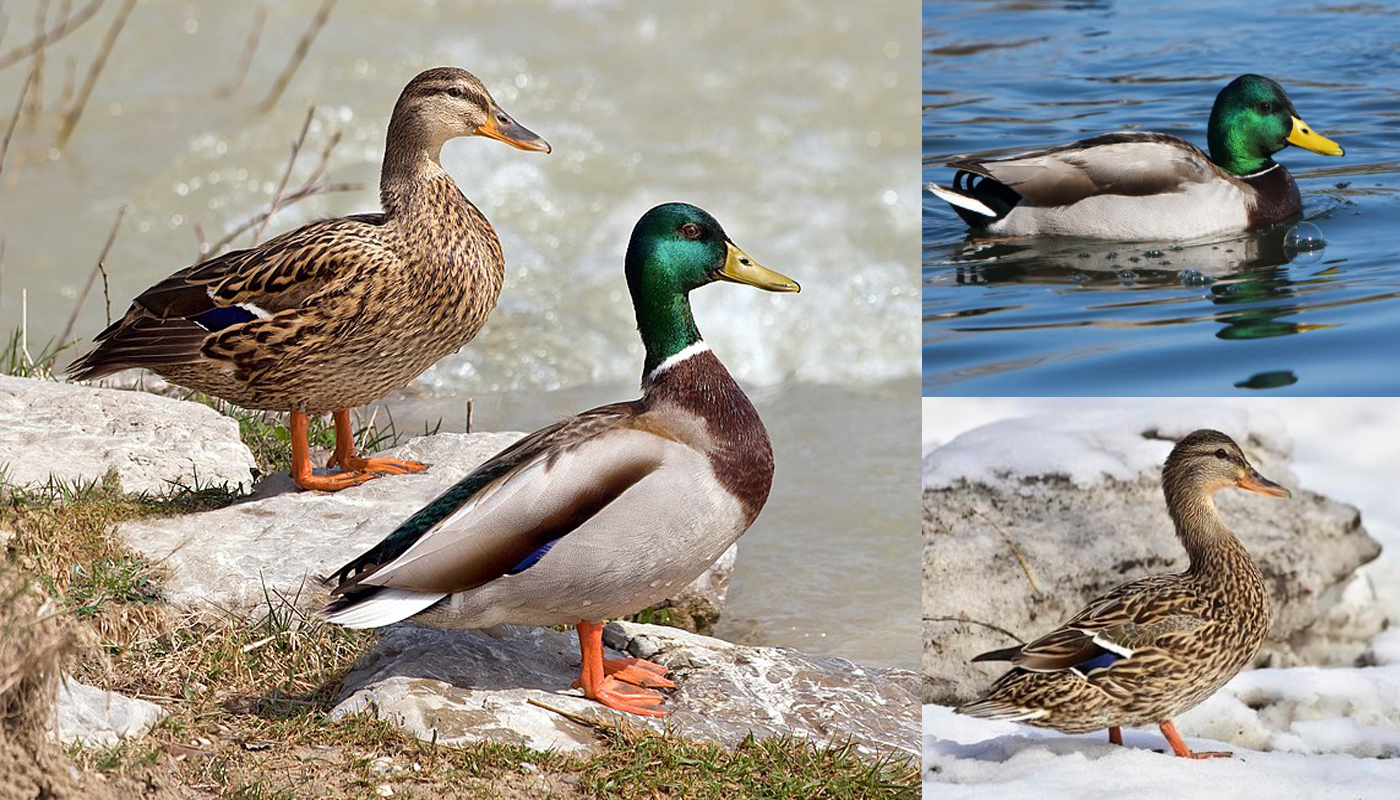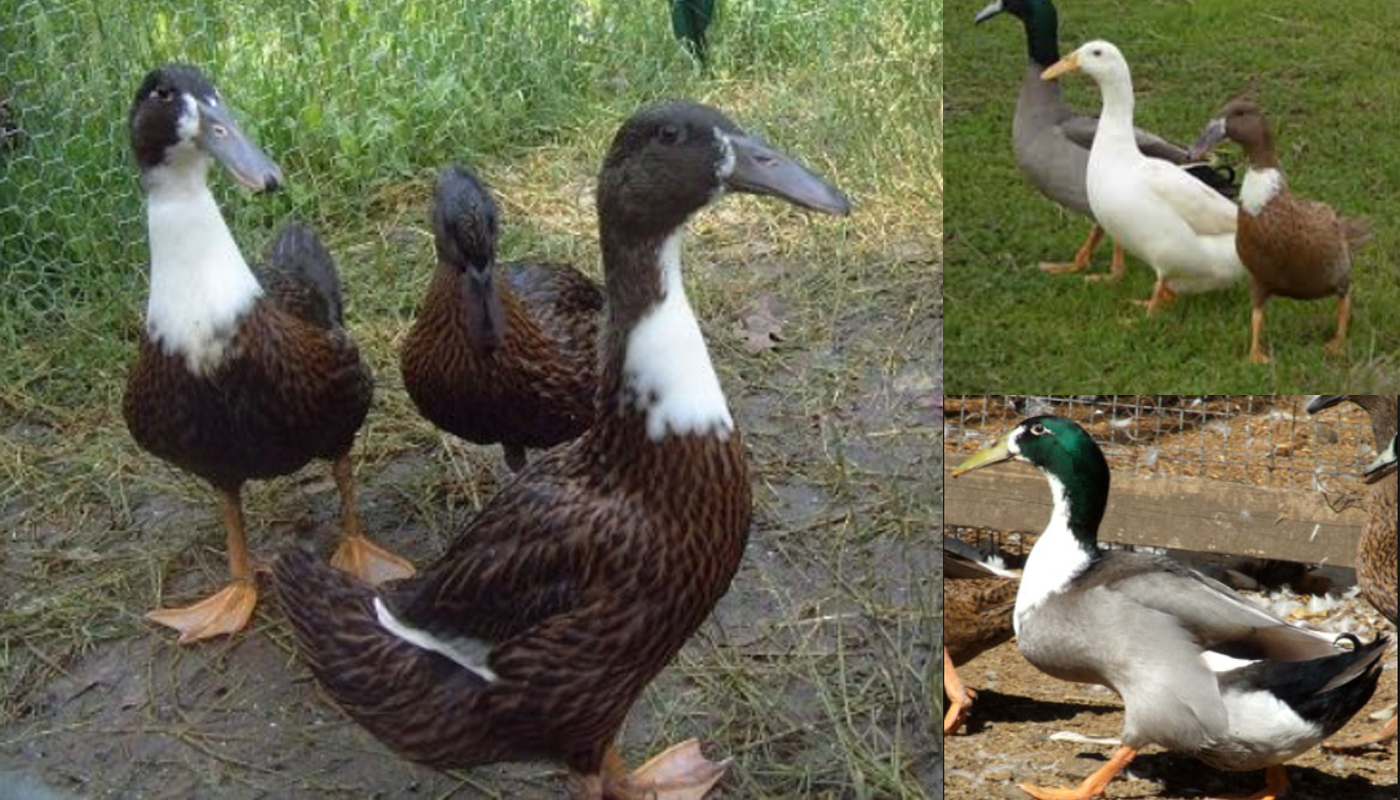
The Khaki Campbell may be a bit high strung and temperamental. But this duck will lay a lot of large nutritious eggs for the table. They make quite an excellent roast duck as well.
Not only are they prolific layers that have tasty meat, but they are exceptionally adaptive to various climates. They can withstand dessert temperatures to the English cold winter chills.
They are excellent foragers that are independent, and they actually prefer to find their own food.
If they are fed correctly and given enough space to forage about in, they can be quite a calm bird. With enough handling, they are quite tame and pleasant. But as a highly energetic bird, they do need a bit more space than most ducks. They also do not do well in very large flocks.
GENERAL INFORMATION |
|
|---|---|
| Country of Origin: | England |
| American Poultry Association: | yes Recognized by the American Poultry Association |
| Duck Category: | Light |
| Duck Class: | English |
| Colors: | Khaki, Date of acceptance: 1941 |
| Good starter duck? | Yes |
| You may Also Like: | TOP 10 GOOD STARTER DUCK BREEDS |
| Bantam Variety Available? | No |
| You may Also Like: | 10 BEST BANTAM DUCK BREEDS |
APPEARANCE / IDENTIFICATION
| DUCK BITS | DESCRIPTION | COLOR | |||||||
|---|---|---|---|---|---|---|---|---|---|
| EYES⇒ | Same for M & F | Dark Brown | |||||||
| BILL⇒ | Medium for both M & F | M = Green Bill F = Green/Black |
|||||||
| * Black bean tipped | |||||||||
| CRESTED? | No | ||||||||
| LEGS⇒ | Color Differs in M & F Size is the same |
M = Dark Orange F = Brown |
|||||||
| Well proportioned beneath their boat-shaped bodies with long graceful necks. | |||||||||
| FEET⇒ | Color Differs in M & F Size is the same |
M = Dark Orange F = Brown |
|||||||
| WINGS⇒ | Differs slightly in M & F | F = Darker M = Lighter with a stripe under |
|||||||
| FEATHERS⇒ | Differs slightly in M & F | F = Dark Khaki M = Light Khaki |
|||||||
| Female has a dark Khaki head Male has a deep jewel green head |
|||||||||
| SKIN COLOR⇒ | Same for M & F | White | |||||||
| Can be slightly yellow depending on their feed | |||||||||
| AVERAGE WEIGHT⇒ |
|
||||||||
| *Bean: This is also called the nail. It is a small round bump found at the end of the duck’s bill. It is used for defence and to catch insects. It is almost like a fingernail and is damaged can grow back. It can also get overgrown much like fingernails if they do not have something to grind it down on. | |||||||||
| ** Note: This is an average weight for the male duck and not a guaranteed weight | |||||||||
USE/PURPOSE |
||||||||||||||||||||||||||||||||||||
|---|---|---|---|---|---|---|---|---|---|---|---|---|---|---|---|---|---|---|---|---|---|---|---|---|---|---|---|---|---|---|---|---|---|---|---|---|
Females/Hens⇒ |
Eggs, meat, show, breeding and good pets
|
|||||||||||||||||||||||||||||||||||
Males/Drakes⇒ |
Meat, breeding, show and pets
|
TEMPERAMENT |
|
|---|---|
| “They can be a bit skittish but otherwise, they are very entertaining as they are so inquisitive” | |
| Good with Kids? | Supervised children should be shown how to handle the ducks |
| You may Also Like: | 10 BEST DUCK BREEDS TO KEEP AS FAMILY PET |
| Flyers? | They can fly and will fly if spooked or feel threatened. It may be an idea to have their wings clipped |
| Noisy Birds? | They are not noisy birds |
| Interact with other ducks? | They do not mind socializing with other ducks or birds for that matter |
| Best duck breeds to mix them with: | Any domesticated duck breed |
| Other animals? | Watch dogs and cats around the ducks |
IDEAL ENVIRONMENT |
|
|---|---|
| “They are quite adaptable as long as they have pond and places to forage” | |
| Ideal Garden Size? | Medium to large |
| Can be Confined? | They like to be out and about |
| Free-Range | Yes |
| Penned Free-Ranging? | Will stop them from flying off |
| Foragers | They are excellent foragers |
| Endures heat well | Yes |
| Endures cold well | Yes |
| Special Requirements? | No |
| Ideal Duck House: | A standard size hutch that is well ventilated and insulated big enough to house the number of ducks occupying it |
| Ideal Duck Pond: | A small pond of some form of a splash pool |
| Flock/Paddling Size: | 2 or more. |
| You may Also Like: | 22 Best DOMESTIC DUCK BREEDS |
GOOD TO KNOW |
|
|---|---|
| Special Care/Attention Requirements? | They need a bit more room to roam as they love foraging |
| Known Predators: | Check with animal control in your area for known predators |
| Conservations Status: | Watch-For more information on poultry, conservation status, check the American Livestock Conservancy Website |
| Breeders Clubs: | It is best to check with the American Poultry Association for various clubs and or organizations. |
| Where to buy them: | Cackle Hatchery, Metzer Farms, Purely Poultry or check with local poultry farmers/suppliers, the APA or check with the American Livestock Conservancy |
| Other: | If you do not want to risk having your ducks shipped check with your local poultry farms for advice on your nearest supplier. |
HISTORY
The Campbell breed of duck was developed in England in the late 1800’s by Mrs. Adele Campbell. At the time Mrs. Campbell resided in Gloucestershire and wanted to be able to provide her family with an adequate supply of roast duck.
At the time Mrs. Campbell had Fawn and White Indian Runner ducks as well as Rouen ducks. Indian Runner ducks are known to be very good egg layers. The Rouen has a nice sized body as her goal was to create a duck breed that would lay a great number of eggs and have a large body for good meat.
The cross of the Indian Runner ducks and the Rouen created the first Campbell ducks. These ducks went on to become one of the world’s greatest egg laying ducks. They will lay between 250 to 340 large eggs that are known for the exceptional flavor and texture. They also have sought after meat that is of good quality and is really tasty.
Originally these first Campbell ducks were introduced to English society in 1898. But these Campbells did not have a very good feather coloring and were said to resemble Mallards that color was poor and maybe a bit faded.
In the 1800’s around the time, the Campbell was released into society buff colored poultry feathers were the favored color variety.
In an attempt to give her Campbells a makeover and better coloring Mrs. Campbell crossed these Campbell ducks with her Penciled Runner ducks. The result was the unique coloring of the Khaki Campbell. Not quite buff and not quite fawn or brown. The coloring of the ducks reminded Mrs. Campbell of the uniforms worn by the military back them. So the new color variations of the Campbells were named Khaki Campbells after the soldier’s uniforms.
The first Campbells were imported to the United States in 1929. There were accepted into the Standard of Perfection by the American Poultry Association in 1941. Although there are a few color varieties of the Campbell only the Khaki variety is recognized by the American Poultry Association.
Health
They have no known or major health issues
- Ducks need water to ensure they do not get “wet feather” disease. This is where the preening gland dries out. Water also stops them from getting pests such as mites, fleas, ticks, lice, etc.
- Well, fed ducks should hardly have any health issues.
- Any birds kept in a flock need to be dewormed. Although ducks are not as prone as other poultry they should still have a de-worming regime. Speak to a local vet or poultry experts for advice. Our article on Healthy Ducks has some great tips and advice on de-worming ducks.
 Domestic Duck Breeds – Getting your Ducks in a Row! Part 2
Domestic Duck Breeds – Getting your Ducks in a Row! Part 2 Mallard Duck Breed – Everything You Need to Know
Mallard Duck Breed – Everything You Need to Know Cayuga Duck Breed – Everything You Need to Know
Cayuga Duck Breed – Everything You Need to Know Aylesbury Duck Breed – Everything You Need to Know
Aylesbury Duck Breed – Everything You Need to Know Hookbill Duck Breed – Everything You Need to Know
Hookbill Duck Breed – Everything You Need to Know Wood Duck – Wild Dabbling Duck Breed
Wood Duck – Wild Dabbling Duck Breed Domestic Duck breeds that are or are Fast Becoming Quit Rare
Domestic Duck breeds that are or are Fast Becoming Quit Rare Rouen Duck Breed – Everything You Need to Know
Rouen Duck Breed – Everything You Need to Know Gadwall – Wild Dabbling Duck Breed
Gadwall – Wild Dabbling Duck Breed Indian Runner Duck Breed – Everything You Need to Know
Indian Runner Duck Breed – Everything You Need to Know The Types and Breeds of Ducks – Getting your Ducks in a Row – Part 1
The Types and Breeds of Ducks – Getting your Ducks in a Row – Part 1 Swedish Blue Duck Breed – Everything You Need to Know
Swedish Blue Duck Breed – Everything You Need to Know